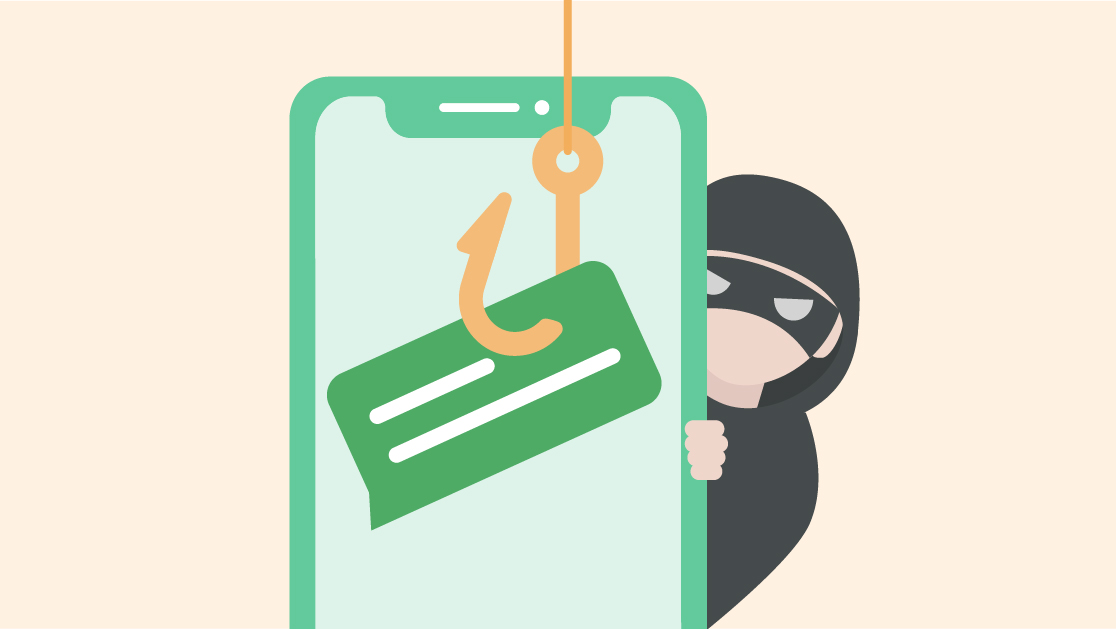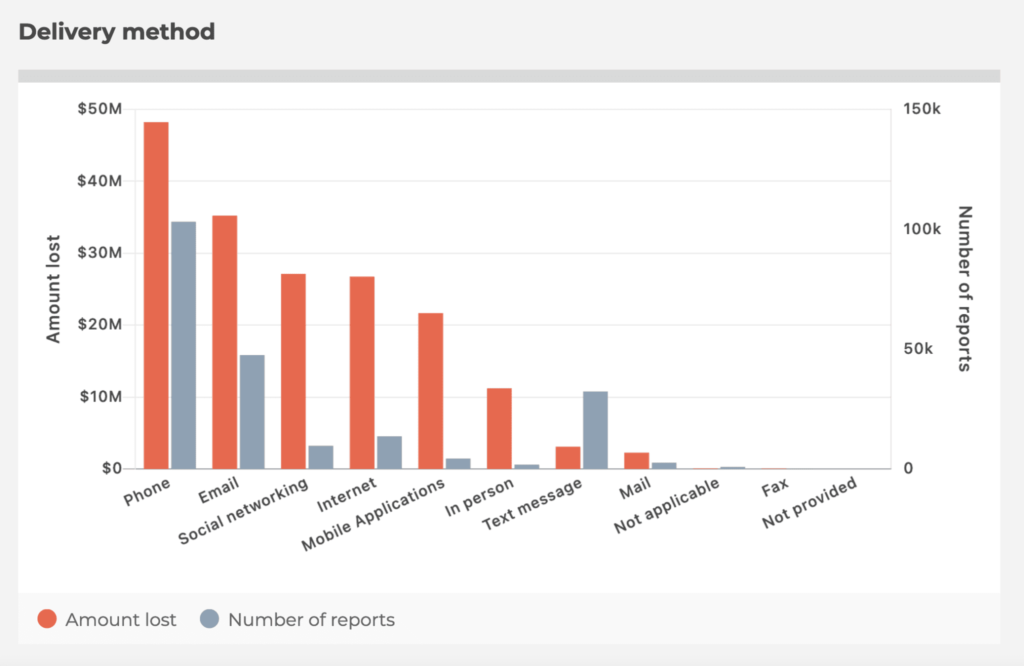Text message scams: How to identify a fake text message
Learn how to identify fake text messages and protect yourself from text message scams before it's too late.

Learn how to identify fake text messages and protect yourself from text message scams before it's too late.

We’d all like to believe we know a scam when we see one.
You probably think, “that could never happen to me…” but a study by Proofpoint shows that over 74 percent of U.S. organizations experienced a successful phishing attack in 2021.
In addition to phony phone calls and email phishing scams, text scams have also become more common. This type of fraud is also known as “smishing.”
SMS phishing (aka smishing) is the fraudulent solicitation of your personal or financial information through the use of text messaging.
Smishing, though uncommon, can be extra effective due to the personal nature of our text inbox.
Here’s how you can protect yourself from smishing scams and spot them before it’s too late.
💡SimpleTexting tip: To help you out, we have a team dedicated to compliance who monitor messages sent through ST for suspicious activity. This ensures that our platform is only used for good.
While each text scam looks a little different, there are some common hallmarks you can look out for to spot a fraud.
We checked out pages from the Better Business Bureau and the Federal Trade Commission to bring you the best information on avoiding text scams.
Legitimate SMS marketing messages are usually sent from a 6-digit short code (like 711711), a 10-digit toll-free phone number (ex: 844-462-2554), or a local text-enabled business phone.
If you receive a text message from an unidentified 11-digit number, the odds are high that it’s a scam.
So, even if they identify themselves as your bank, realtor, insurance agent, etc., look at the number the message was sent from for verification.
Plus–your bank won’t contact you from their personal cell for your bank account, card numbers, or other sensitive information.
The family emergency scam text message is one of the most common, according to the FCC.
In this instance, you’ll receive a text message saying something like this:
“Your family member who lives in __ (or is traveling in __) has run into some trouble. They’re in need of financial help and a money transfer is the only way to help them.”
They may even say that contacting this family member will cause them danger.
These texts can be very frightening, which is why they work. However, before you take any action or send money, take a pause.
Try to verify the person’s identity by asking questions a stranger couldn’t know the answers to. Reach out to a trusted family member or friend to confirm the scammer’s story (even if they say to keep it a secret).
Always feel free to call 1-877-FTC-HELP for advice.
Another common smishing scam comes not in the form of asking for money, but in claiming money is owed to you.
A fake refund often comes from a “government” agency or monthly billing program (like your cell phone provider) letting you know you were “overcharged.”
They will often ask you for direct deposit information so a charge can be reversed.
In this case, once they secure your routing number, they can access your account and steal from you.
These scams tend to look innocent on the surface. They generally say something like:
“Your [email, text, app] password has been [compromised, used with another device, hacked]. Your account has been deactivated for your protection. Text XXXXX to reactivate your account.”
In the case of these messages, simply delete the messages (and report them). Do NOT reply or send your username or password. Just check the accounts in question.
When you see that they haven’t been deactivated, you’ll have your answer.
This is another common scam–and it’s also the simplest.
Targets receive a text informing them that they’ve won a prize, giveaway, sweepstakes, etc.
Through either a hyperlink or reply, they’re instructed to reach out to claim the reward. However, this is yet another ploy to receive your personal information.
In this case, if you did not enter to win anything, ignore the message.
If you’re not sure if you did (let’s face it, we all enter contests every now and then), reach out to the brand on their verified website or social media pages to double-check.
If you’re the victim of a text scam, know that you’re not alone – over 47 billion spam texts were reported in 2021.
The good news is, the worst-case scenario isn’t terribly common. You just need to recognize your mistake and act as quickly as you can.
If you do fall victim to a text scam, you may experience a few possible outcomes:
Many of us have seen the screenshots on social media of humorous interactions between scammer and victim.
We recommend avoiding any interactions at all costs.
If your scammer knows they’ve successfully reached somebody, they’ll only make their text scams even harder to pick up on next time.
Instead, here’s how to successfully ‘can the spam’ when you receive a suspicious message.
Of course, you should avoid replying at all costs, but you should also:
The good news is, text message scams are far less common than other digital tactics.

We’ve covered the broad strokes of identifying and avoiding text scams, but now we’ll dig into some of the most common (and crucial) questions we hear about smishing.
Technically, no, which is why most of these scam texts ask you to complete an action–like clicking a link, replying, or calling a number.
As long as you don’t complete that action, simply opening the text won’t do much harm.
In some cases, yes. Replying to a smishing message can allow malware into your phone or land you some unwanted charges.
Obviously, you know when you’ve gotten a text from trusted friends or family (because they show up as a contact).
If you’re getting spam from an unknown number, you may be able to Google that number and find it listed on websites that report text scam numbers.
Your best course of action, though, is still to report and block the number and delete the text.
Always remember that knowledge is your best defense against scams.
For a comprehensive list of the most popular scams and frauds in the United States, check out this government developed guide.
If you’re interested in what is legal to text, feel free to explore our SMS compliance guide, which explains the far more common, legal world of text marketing.
Meghan Tocci is a content strategist at SimpleTexting. When she’s not writing about SaaS, she’s trying to teach her puppy Lou how to code. So far, not so good.
More Posts from Meghan TocciLearn about the tool that makes text marketing possible for thousands of businesses.
ReadCurious about how to use SMS short codes for text marketing campaigns? Here’s what you need to know about short codes.
ReadStart a text marketing campaign or have a 1-on-1 conversation today. It's risk free. Sign up for a free 14-day trial today to see SimpleTexting in action.
No credit card required